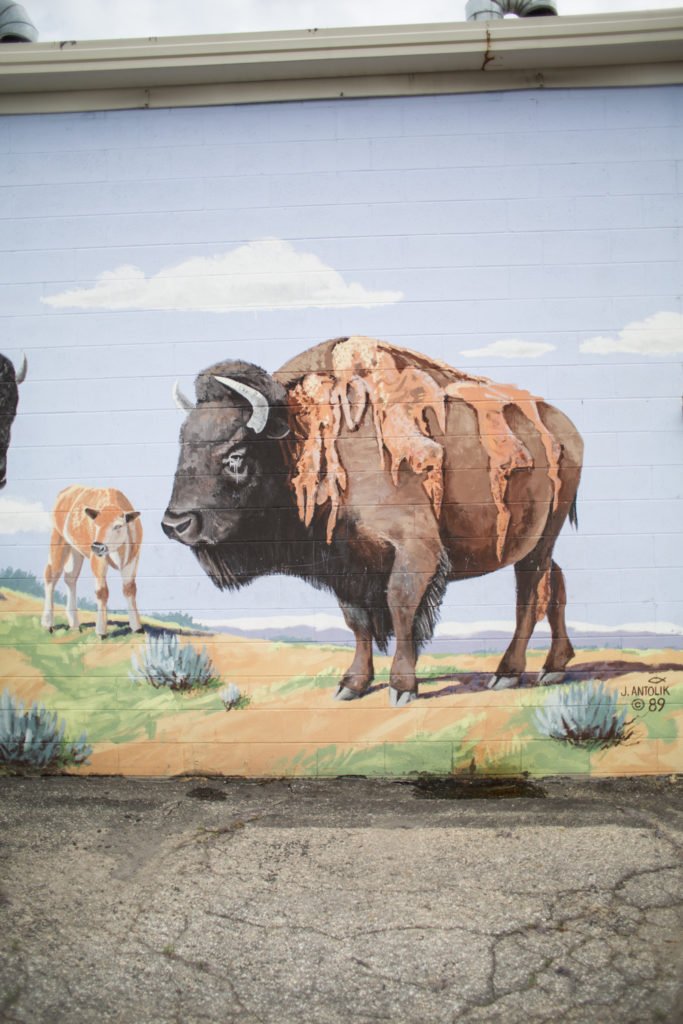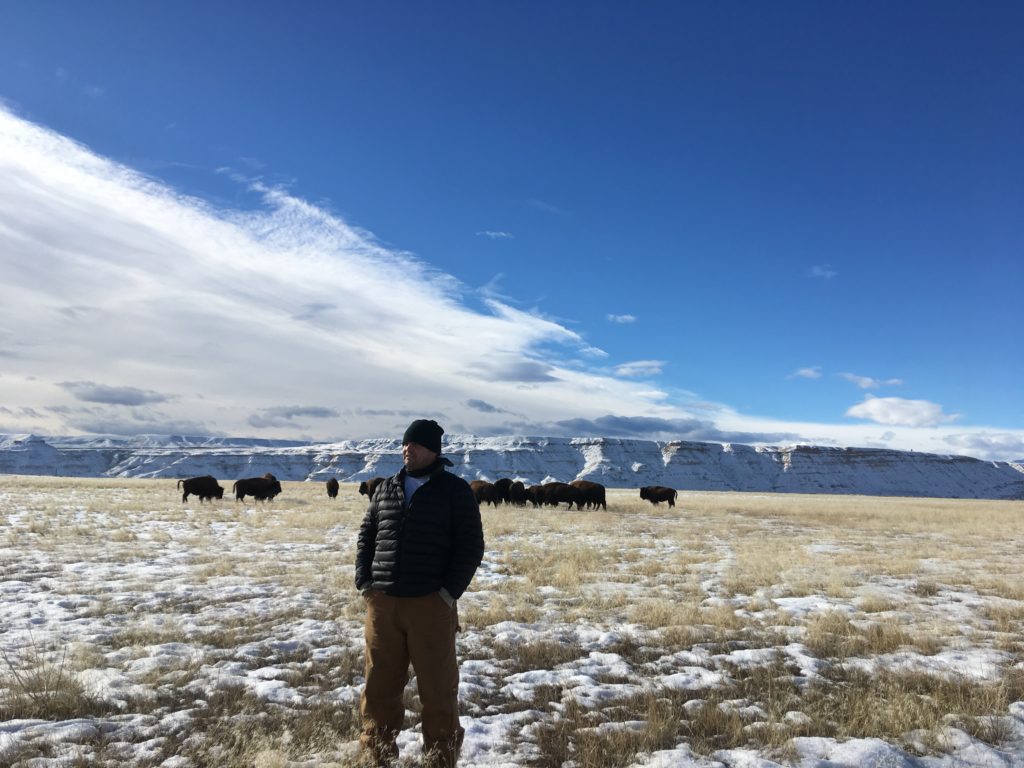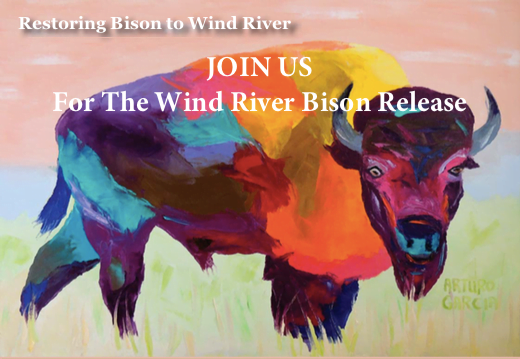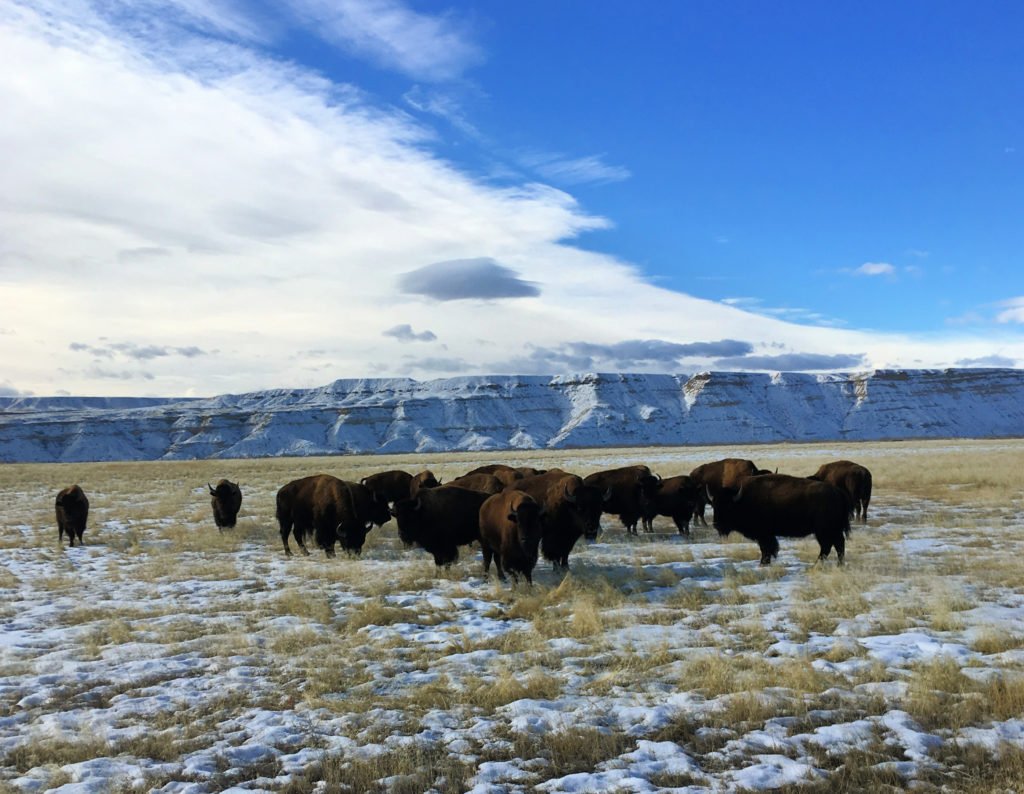November 30, 2019
The threads of bison and Native Americans are weaved tightly into the tapestry of the American West, past and present. You can witness this history and future across Wind River Country.
You can start by learning the historical role of the bison, or buffalo, in Wind River Country’s museums. For example, the Wind River Hotel & Casino near Riverton has a permanent display about the many uses the Northern Arapaho had for bison and how they utilized every part of the harvest for their daily lives. This detailed exhibit is a fascinating aspect of the hotel’s Arapaho Experience Room. The small museum also includes a timeline of the tribe from oral history to modern day. The Fremont County Pioneer Museum hosts exhibits dedicated to this sacred animal with a harried past in the Americas.
To this day, the town of Lander has bison painted on the walls of public buildings.

After exploring the seasons of Wind River Country past, step outside to witness, in person, the bison of Wind River present. You now have the chance to spot them from Hwy. 26 between Riverton and Dubois, as they have made their return in recent years.
In early November of 2016, 10 wild bison were reintroduced on the Wind River Indian Reservation after 131 years.

“This restoration effort in partnership with the National Wildlife Federation’s Tribal Program, forty years in the making, will return buffalo to our lands, our culture, our community, and generations to come.”
Jason Baldes, Eastern Shoshone buffalo representative, wrote.
The Eastern Shoshone Tribe and the NWF hope the herd will expand to about 1,000 head in the next 10 years.
That glimpse into the future became a reality in the spring of 2017 with the birth of the first bison calf on the Reservation. Last October, another ten buffalo were released on the reservation, and in the spring of 2019, that herd grew yet again by five young bulls.
This fall, the Northern Arapaho secured their own bison herd on the Reservation.

The National Wildlife Service estimates 5,000 bison were killed every day, between 1872 and 1873, reported the Casper Star Tribune. By 1884, there were about 325 bison left. The reversal of this tide for bison and Native Americans has been a long time coming, and Baldes was instrumental in making that happen.
The people of the present are weaving rows into the tapestry: A future that honors and reflects a beautiful, healthy glimmer of the past. Perhaps the Eastern Shoshone story, about a man with a buffalo puha—supernatural power—still rings true:
“It is said that years ago a man, a buffalo puhagant, collected all the buffalo skulls on the ground and put them in rows. He sang a song to the buffaloes, asking them to get up. And then the buffaloes got up, and there were ten times as many buffaloes as there were before. He said, ‘go up on the hill we want a hunt tomorrow.’ Next morning he said to Coyote, ‘tell the people not to take the legs, heads, and hides of the buffaloes we are going to hunt.’ Coyote told the people, ‘just cut up the meat, but leave the bones, feet, and heads there. Then they can get up and go again, so we will have another steak later on!’ They did that.”*

*As published in the book, “Stories of the Eastern Shoshone,” told by John Trehero to Ake Hultkrantz, transcribed by Geraldine Hultkrantz
Posted in Notes From the Field